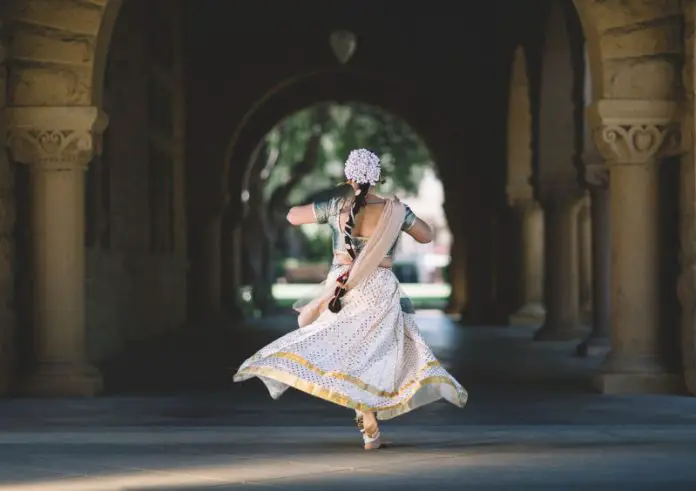
Archeological evidence tells us that India was home to a highly sophisticated culture spanning the greater part of Asia. With lands so rich in history and culture, tradition enriches a traveler’s experience.
And when thinking of India, grand palaces and colorful cities come quickly to mind. After all, they’re a significant part of what India is today.
From the North to the South of India, the diverse culture is rooted in history which holds great importance to the locals, as well as to the world. Step into the past and get lost in a series of magical tales as you explore the most important historical sites in India.
India historical sites
Table of Contents
Rich in holy places, traditions, and royalties, India offers those who are seeking knowledge and awareness an insight into what life was like before the India we know today.
Taj Mahal, Yamuna River in Agra
Built between 1632 and 1648, The Taj Mahal is probably one of India’s greatest historical sites and considered one of the eight wonders of the world. It’s no surprise that tourists travel from far and wide to witness this beautiful white marble building. It’s considered to be the greatest architectural achievement within the range of Indo-Islamic architecture.
Although the white marble grabs our attention instantaneously, the passages within the building will excite those with a love for art. Delicate inlaid flowers have been engraved within the walls, accompanied by precious stones intertwined in the vines.
With over 2.5 million visitors a year, people can visit the Taj Mahal throughout the day and witness the changing sun as it creates different color hues against the beautiful white architecture.
The Taj Mahal love story
Nestled along the holy waters, the Taj Mahal holds its own magnificent love story. The building was commissioned by Mughul Emperor Shah Jahan as a dedication to his beloved wife Mumtaz Mahal. The death of his tender-hearted wife crippled Shah Jahan with grief, and from that moment he poured his emotions and sorrow into constructing this mausoleum.
Taking a tour around this famous Indian landmark is a great way of hearing the story of the everlasting symbol of love. Looking for a tour? This unique tour offers a 4,5-hour journey around the monument at a really great price!
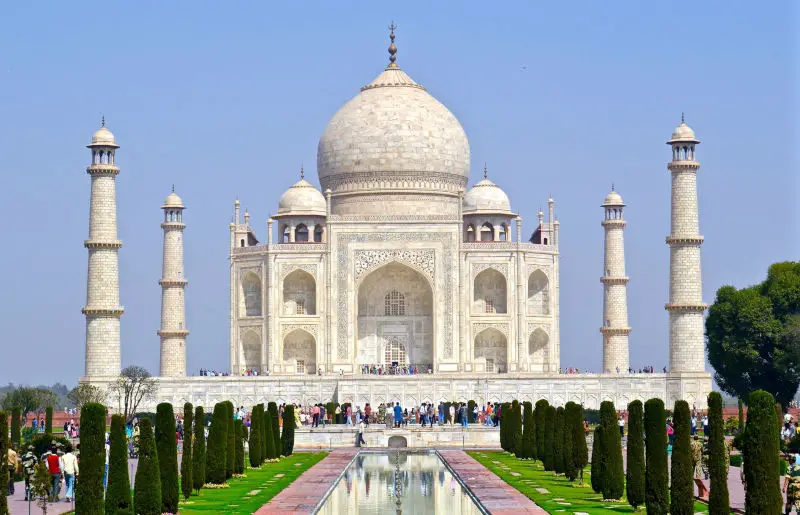
Humayun’s Tomb, Delhi
Another great architectural achievement in India. Humayun’s garden-tomb was the first design of its type in the Eastern region; a garden tomb setting that has been inspired by the description of paradise in the Quran.
The tomb was built in the 1560s, as a dedication to Humayun’s son, Emperor Akbar. Persian and Indian craftsmen worked together to erect it, but the tomb is very much influenced by Persian architecture.
The mausoleum stands tall with vaulted cells on all four sides and a shrine in the center. The purpose of the vaulted cells? Well, the tomb holds 140 deceased members of the Mughal family, which is why it’s been nicknamed ‘the dormitory of the Mughals’. No tomb in India or elsewhere contains a greater number of Mughal emperors and their relatives.
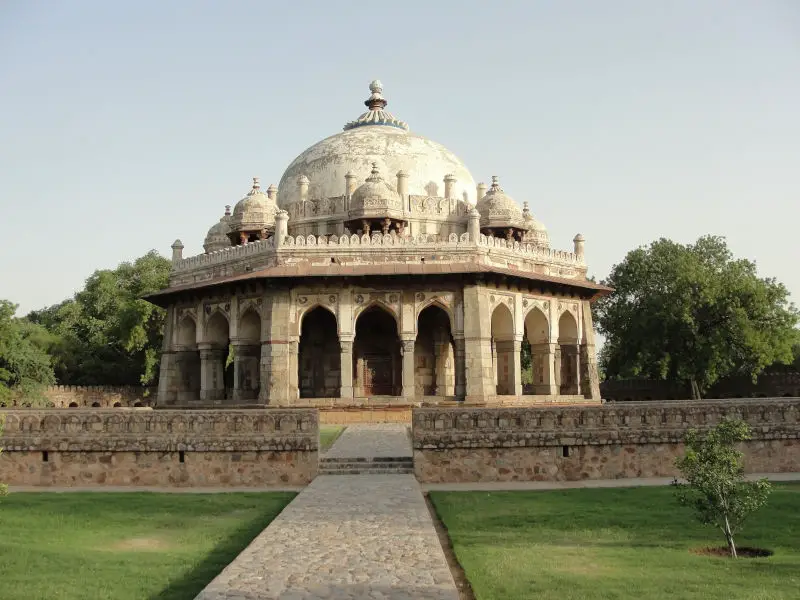
Gateway of India, Mumbai
The Gateway of India was built to commemorate the arrival of the Emperor and Empress of India in 1911, although construction didn’t begin until 1915. The arch-monument was to be used as an extravagant ceremonial entrance into British India, solely for important colonial figures.
Nowadays it is one of the most unique landmarks in Mumbai, overlooking the Mumbai harbor bordered by the Arabic sea. The great historical building attracts tourists, photographers, vendors, and street performers, offering a glimpse into the liveliness of the city.
Top travel tip: The elephant caves are located nearby, and you can travel on a motorboat to reach the elephant islands.
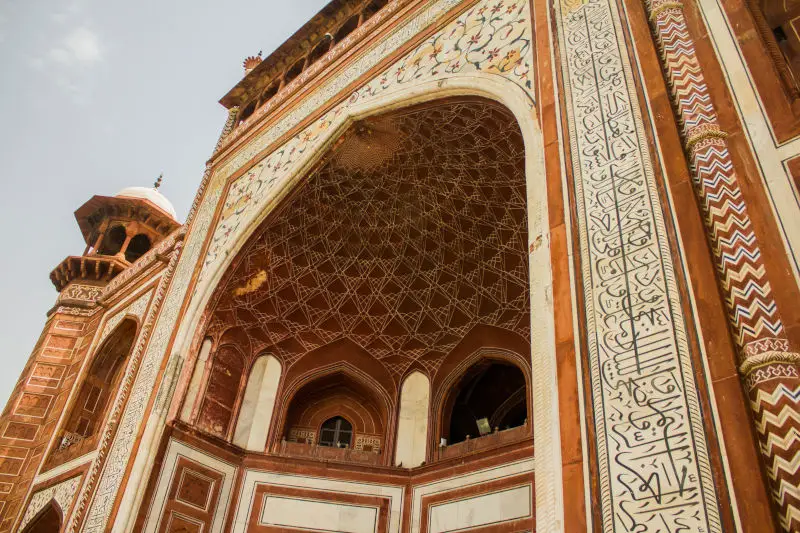
Famous places in India
India has emerged as one of the most popular tourist destinations, whether it be for those seeking adventure, spirituality or knowledge. Visit these famous sites in india to maximize your experience of India and learn as much you please.
Mehrangarh Fort, Jodhpur, Rajasthan
Not only is Mehrangarth one of the largest forts in India, but it’s also the most impressive and well-maintained. While many forts have been abandoned, this one is still in the hands of the Jodhpur Royal Family.
The fort is spread out over 5km and comprises of palaces, museums, and restaurants. Overall you can say it’s a great tourist attraction with lively music, street performers and local art displays shown daily.
To enter the fort, you have the option of one of seven different gates. These seven gates have all been built by seven different rulers as a mark of victory over the Jaipur and Bikaner armies. Visit the museum here to hear about the extravagant life stories of the Royals and the culture of honor. Here’s a link to the museum trials at Mehrangarh that provide all the different walk routes and directions.
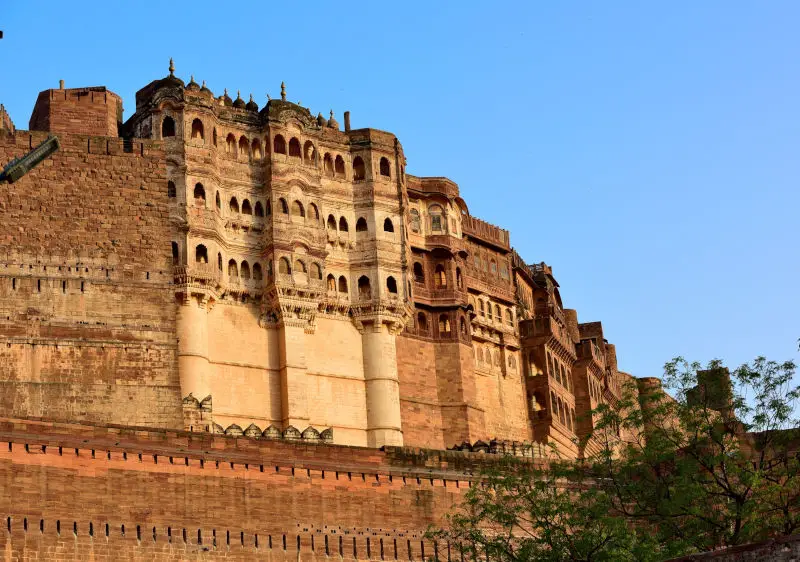
Red Fort, Delhi
This is one of Delhi’s top tourist attractions and also the most famous monument in India. The fort stands as a reminder of the Mughals who ruled the country, as well as an icon of independence for India.
India, unfortunately, has a sad history. Struggling to gain independence, conflicting religions, and royal reigns left the country in a constant flux of decline. But a century after the British ruling, India gained its independence and the Red Fort was chosen as the new place of celebration.
In recognition of the importance of the site, UNESCO declared it a World Heritage Site which can now be visited throughout the year. The best time to visit the Fort is from November to March, you’ll then miss monsoon season and enjoy the pleasant (and probably less rainy) days.
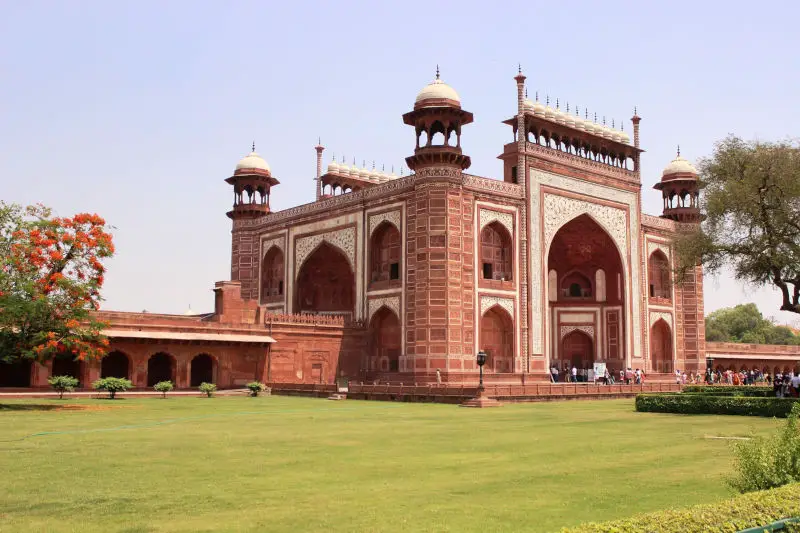
Kuldhara Village, Rajasthan
The Kuldhara Village holds a story of mysterious endeavors. Once a prosperous village, home to an estimated 1600 people, and now a land deserted and said to be cursed to future inhabitants.
The story goes that the ruling King saw the village chief’s daughter as his future wife, leaving the village chief in disgust and fear. So one dark night in 1825, all 1600 villagers vanished from the lands, leaving behind not even a single person.
The villagers disappeared with no trace of evidence pointing to where they went. How is it that a village so well established (with temples, wide streets, and a grid network), could simply disappear? It still remains a mystery, and legend says anyone who dares to live on the land shall die.
The village is now an eerie ghost town in ruins, attracting dark tourists from around the globe.
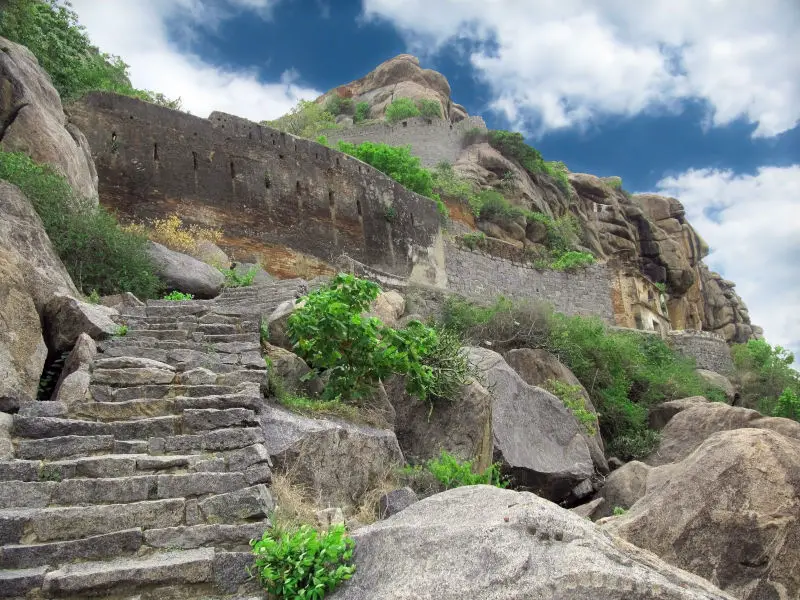
Important places in India
Across India, there have been many places deemed as national heritage sites by UNESCO. These unique places share a little more about Indias diverse and colorful past.
Elephanta Caves, Mumbai Harbor
Hop on a ferry from the Gateway of India and you’ll be transported to a hidden world of caves and their unique carvings of Shaivite sculptures. The artworks are owed to various religious texts, spiritual philosophies, and mythology, especially the Hindu mythology.
The island is scattered with numerous archeological remains, providing testimony to India’s rich history. The remains date back as far as the second century BC, revealing a lot about the ancient civilizations that roamed the island.
Although not an entirely new expression of art, the engravings display innovative developments in rock-art architecture. The caves are seen as the most magnificent achievements of rock-architecture in Western India. Definitely worth making a day trip out of it!
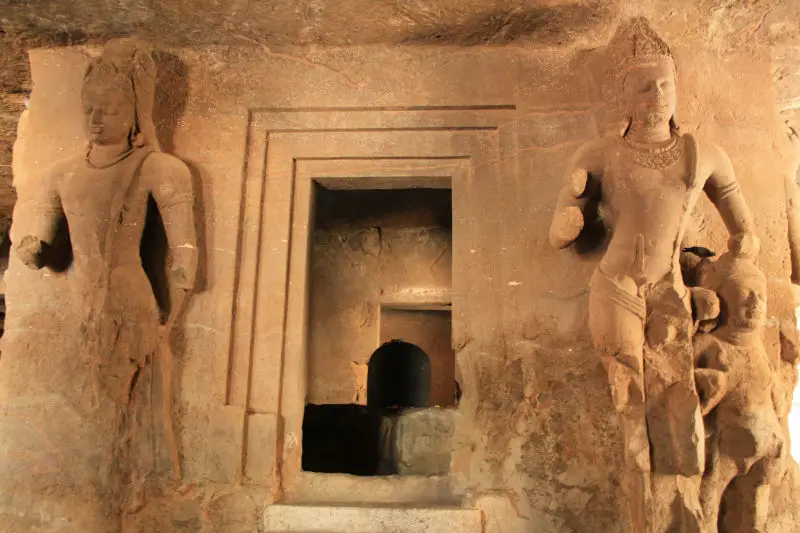
Jallianwala Bagh, Punjab
The Jallianwala Bagh, an important place in India, serves as a reminder to all those who were wounded and killed in the Jallianwala Bagh Massacre, 1919. The Massacre marked a huge turning point, with Gandhi encouraging full commitment to Indian Nationalism and independence from Britain.
The historic garden holds museums, galleries, and several different memorial structures. This is a pretty popular place in India, so you’ll find plenty of different vendors surrounding the monument, making it an ideal spot to spend some time out.
Mahabodhi Temple, Bodh Gaya
One of Indias most important spiritual sites; it’s here that the Buddha is said to have found enlightenment. As testimony to this enlightenment, the Mahabodhi Temple in Bodh Gaya has been elaborately crafted so that individuals from around the world can come and honor the Buddha.
The main shine holds a painted statue of Buddha. And walking around the temple grounds will lead you to discover several other significant places that the Buddha is said to have practiced daily meditations and given lectures.
Many of India’s famous historical sites are guaranteed to be busy and, at times, quite overwhelming. But it’s said there is a feeling of calm here as tourists seem to be on their best behavior (trying hard not to interrupt those who choose to mediate here).
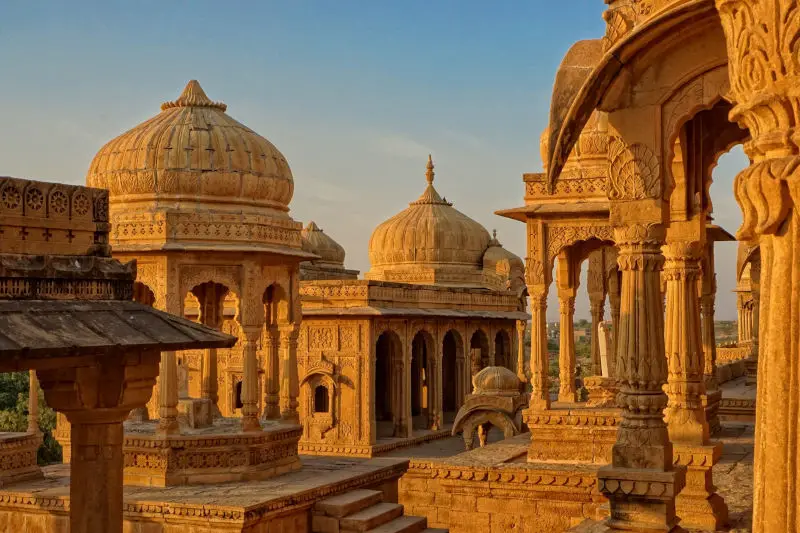
A quick list of historical places in India
Still eager to explore more of what India has to offer? Here is a list of some of the best places to unleash your curiosity:
● Champaner-Pavagadh Archaeological Park, Gujarat
● Group of Monuments at Pattadakal, Karnataka
● Sanchi Stupa, Madhya Pradesh
● India Gate, Delhi
● Ajanta and Ellora Caves, Maharashtra
● Hawa Mahal, Jaipur
● Mysore Palace, Mysore
A country that has witnessed the rise and fall of several different kingdoms, emperors, and dynasties, ancient buildings in India aren’t just popular tourist destinations. These fascinating historical sites represent the country’s heart and soul, and indulging yourself in them opens your mind to the expansive knowledge tucked away in India.














